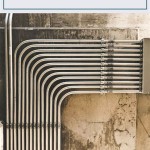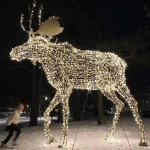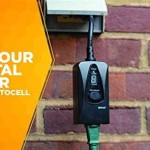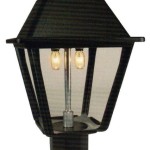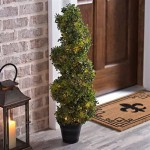Are LED Bulbs OK for Outdoor Use?
LED bulbs have become increasingly popular for both indoor and outdoor lighting, offering numerous advantages over traditional incandescent and halogen bulbs. Their energy efficiency, longevity, and versatility make them a compelling choice for many applications. However, it is essential to consider specific factors when using LED bulbs outdoors to ensure optimal performance and longevity. This article explores the suitability of LED bulbs for outdoor use, addressing key considerations like weather resistance, durability, and compatibility.
Weather Resistance
One of the most critical factors to consider when using LED bulbs outdoors is their ability to withstand harsh weather conditions. Unlike indoor applications, where bulbs are protected from the elements, outdoor bulbs are exposed to rain, snow, sleet, wind, and extreme temperatures. To address these challenges, LED bulbs designed for exterior use incorporate specific features that enhance their weather resistance.
Key features include:
- IP Ratings: Ingress Protection (IP) ratings indicate a bulb's resistance to water and dust. Look for bulbs with an IP rating of at least IP65, which denotes protection against dust and jets of water. Higher IP ratings, such as IP67 or IP68, offer even greater protection against water ingress and are suitable for submerged applications or extremely wet environments.
- Sealed Construction: Outdoor LED bulbs typically have a sealed construction that prevents moisture from entering the bulb and damaging its components. The sealed construction ensures the bulb's longevity even in harsh weather conditions.
- Durable Materials: Outdoor LED bulbs are often made from durable materials, such as polycarbonate or aluminum, which can withstand impacts and resist corrosion. These materials contribute to the bulb's longevity and reliability.
Durability
In addition to weather resistance, outdoor LED bulbs must also be durable enough to handle the physical stresses of outdoor environments. Factors like wind, vibration, and potential impacts from debris can affect the bulb's performance and lifespan. Here are some key considerations:
- Sturdy Housing: Outdoor LED bulbs typically have a sturdy housing that protects the internal components from damage, ensuring the bulb withstands impact and vibration.
- Shock Resistance: LED bulbs designed for outdoor use often have a higher shock resistance rating compared to indoor bulbs. This rating ensures the bulb can withstand accidental bumps and falls, maintaining its functionality.
- UV Resistance: Outdoor LED bulbs are exposed to ultraviolet (UV) radiation from the sun, which can degrade certain materials over time. Many outdoor LED bulbs are made with UV-resistant materials to prevent degradation and maintain their performance.
Choosing LED bulbs with these features helps ensure they can withstand the rigors of outdoor use and provide reliable lighting for extended periods.
Bulb Compatibility
Before purchasing LED bulbs for outdoor use, it is essential to consider compatibility with existing fixtures. Traditionally, outdoor lighting fixtures were designed for incandescent or halogen bulbs, which have different voltage and wattage requirements compared to LED bulbs. Therefore, choosing LED bulbs with appropriate voltage and wattage compatibility is crucial to ensure they work correctly in existing fixtures.
Here are key things to consider:
- Voltage: Most outdoor LED bulbs are compatible with standard household voltage (120 volts in North America). However, some fixtures may require specific voltage input. Always check the fixture's specifications and ensure the LED bulb has the same voltage rating.
- Wattage: LED bulbs are significantly more energy-efficient than traditional bulbs, consuming less power for the same amount of light output. Most outdoor fixtures are designed for higher wattage bulbs. To ensure compatibility, look for LED bulbs with a wattage equivalent to the incandescent bulb previously used. For example, if a 60-watt incandescent bulb is used, a suitable LED bulb replacement might be a 10-watt LED bulb.
- Base Type: LED bulbs come in various base types, such as E12, E17, E26, and E27. Ensure that the LED bulb's base type matches the base type of the existing fixture.
Checking the compatibility of LED bulbs with existing fixtures ensures proper operation and prevents damage to the bulb or fixture.

Can Led Lights Be Used Outdoors Bpm Electric

Best Outdoor Lighting Bulbs Of 2024

The Advantages Of Outdoor Led Lighting

How To Choose The Best Outdoor String Lights

Can I Use This Bulb Outside 1000bulbs Blog

Outdoor G40 String Lights Festive Patio And Garden Lighting Chronos

Outdoor And Backyard Lighting We Love Reviews By Wirecutter

Outdoor Led Lighting Exterior Light Fixtures E Conolight

Indoor Vs Outdoor Lighting Are They Interchangeable Kirby Electric

Sl101 Led Low Voltage Bistro Outdoor String Lights Kings Lighting
Related Posts
